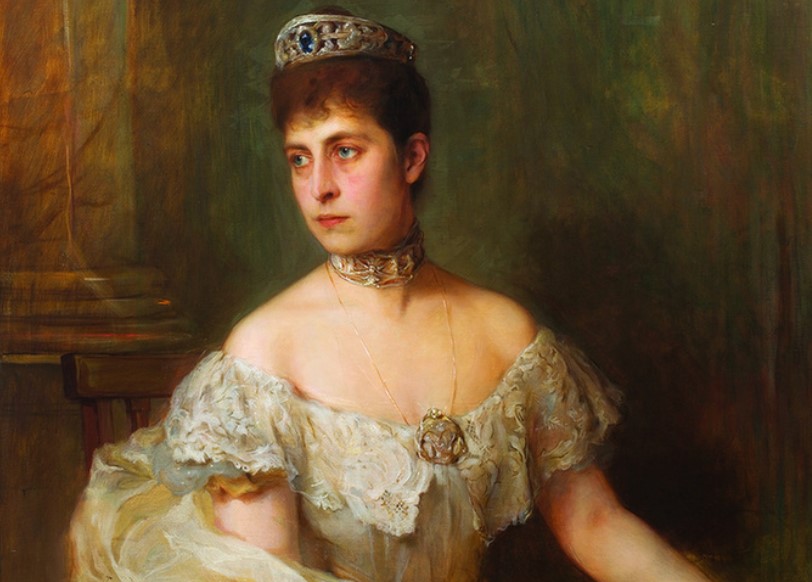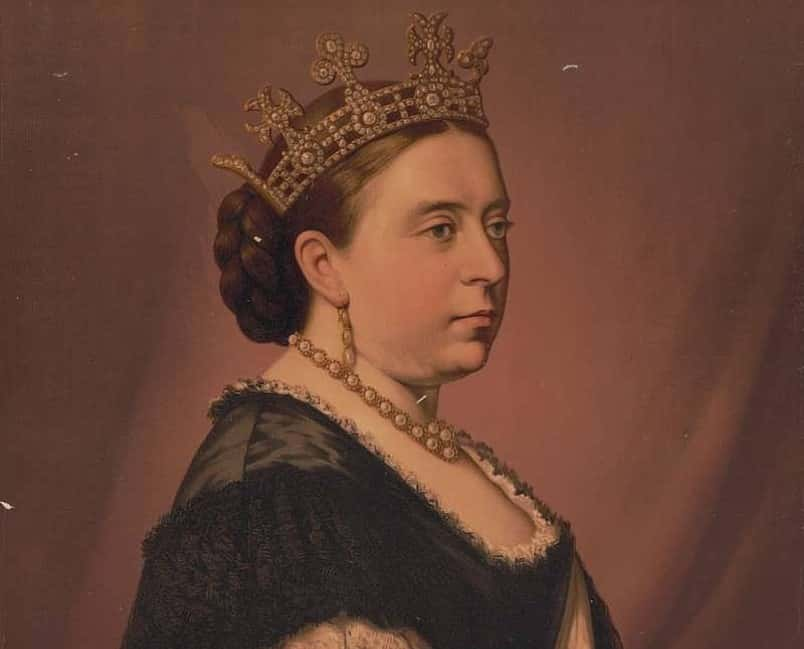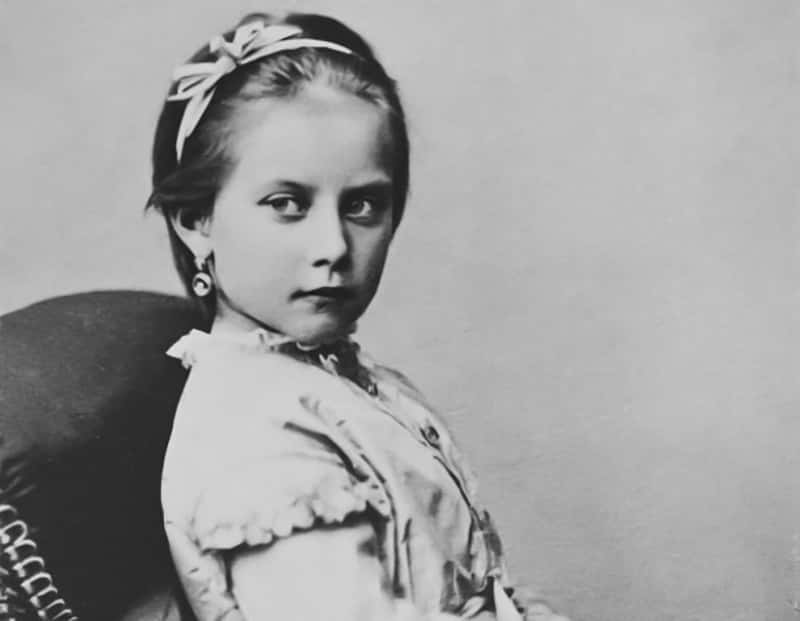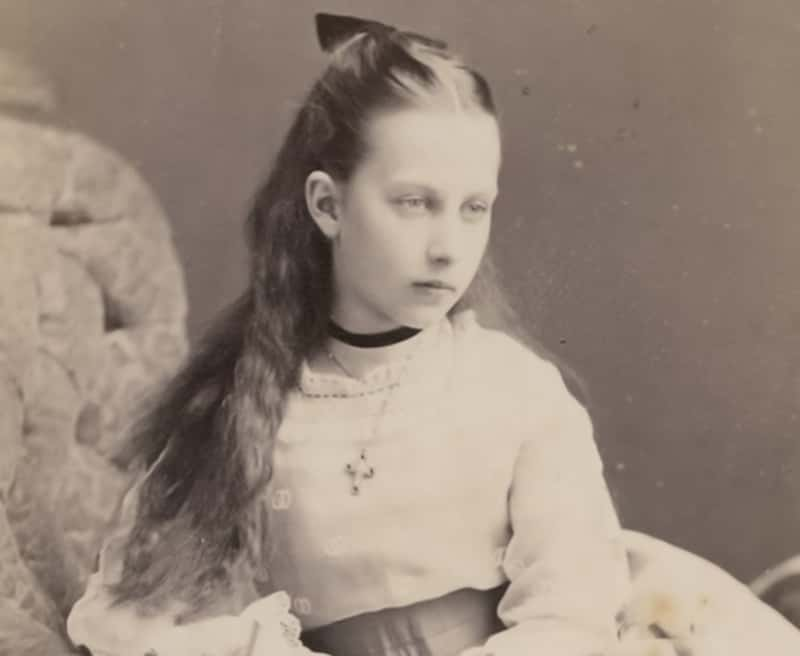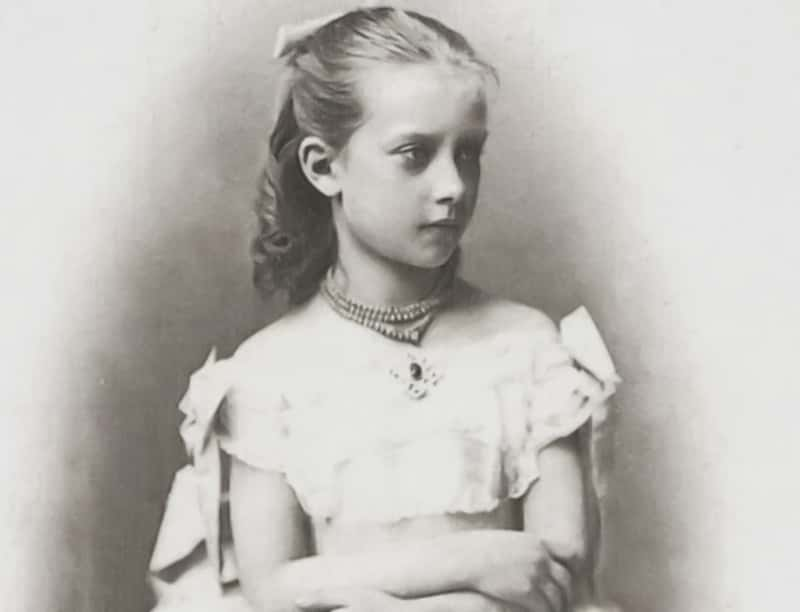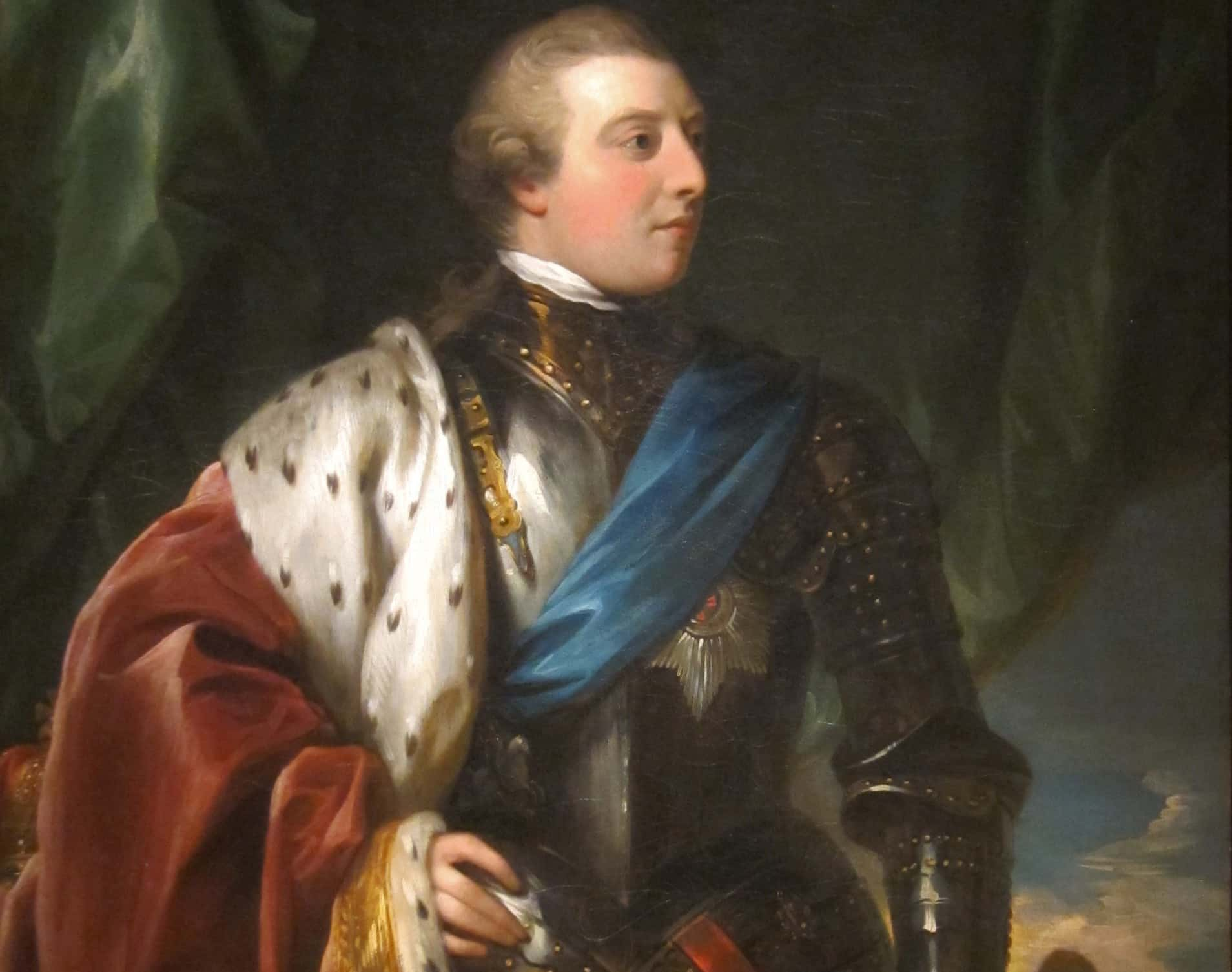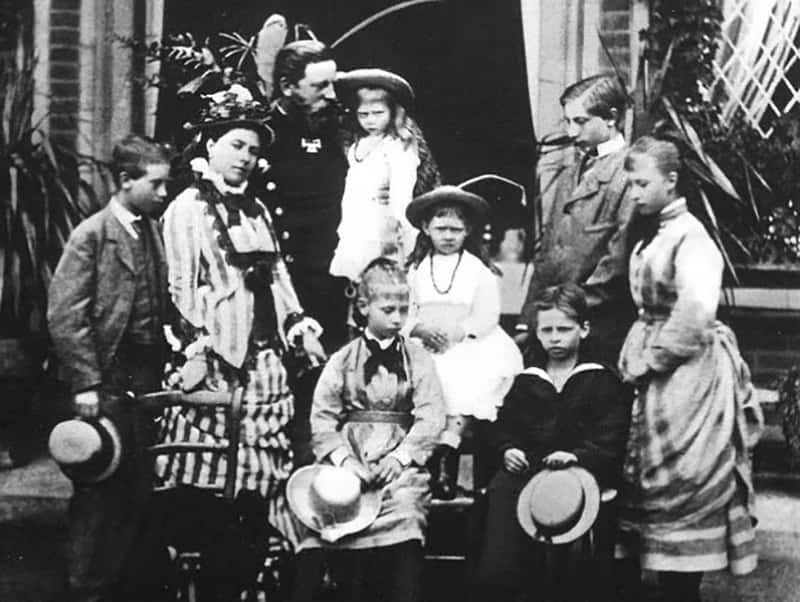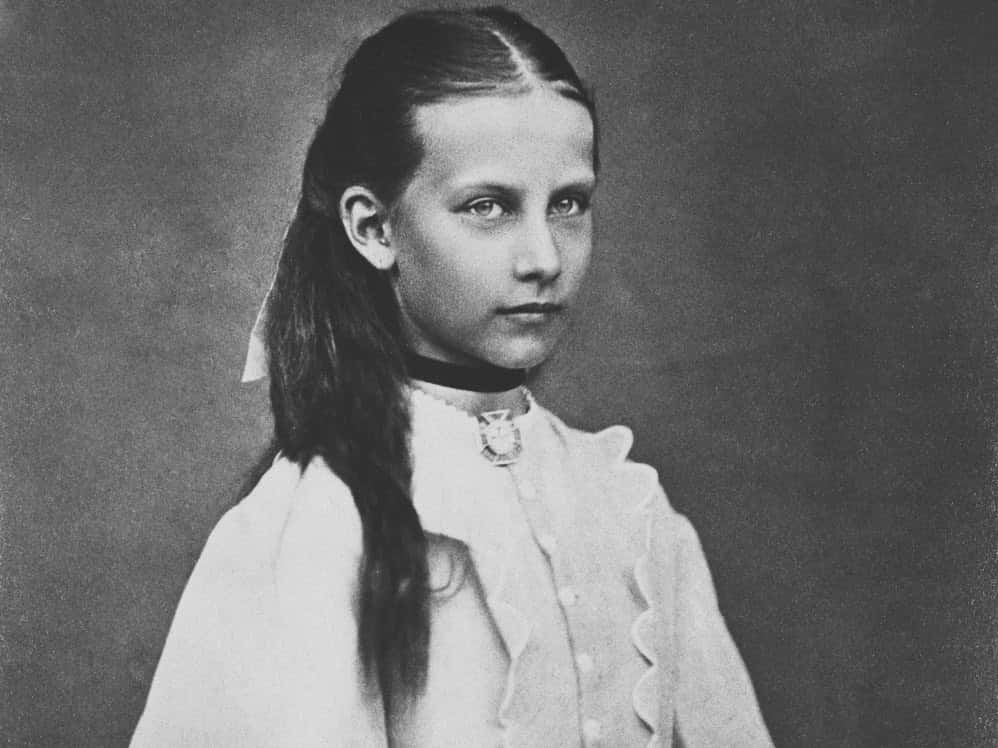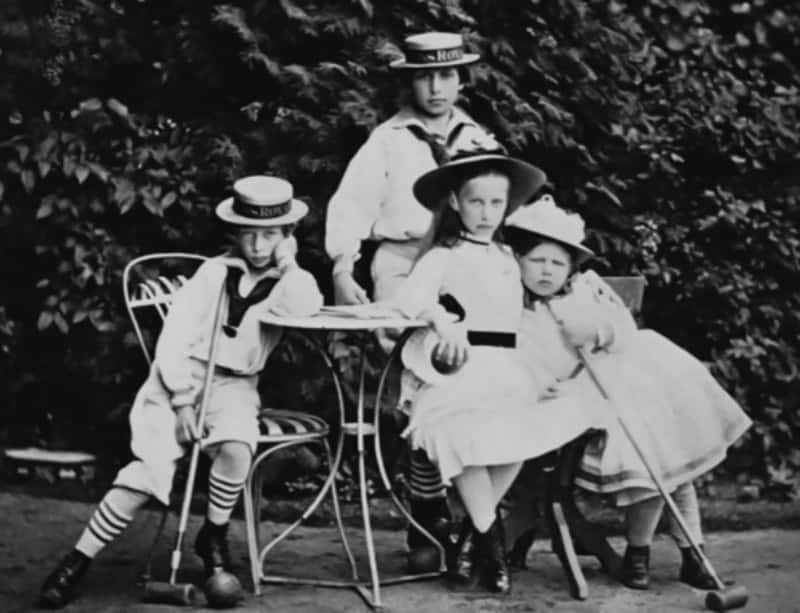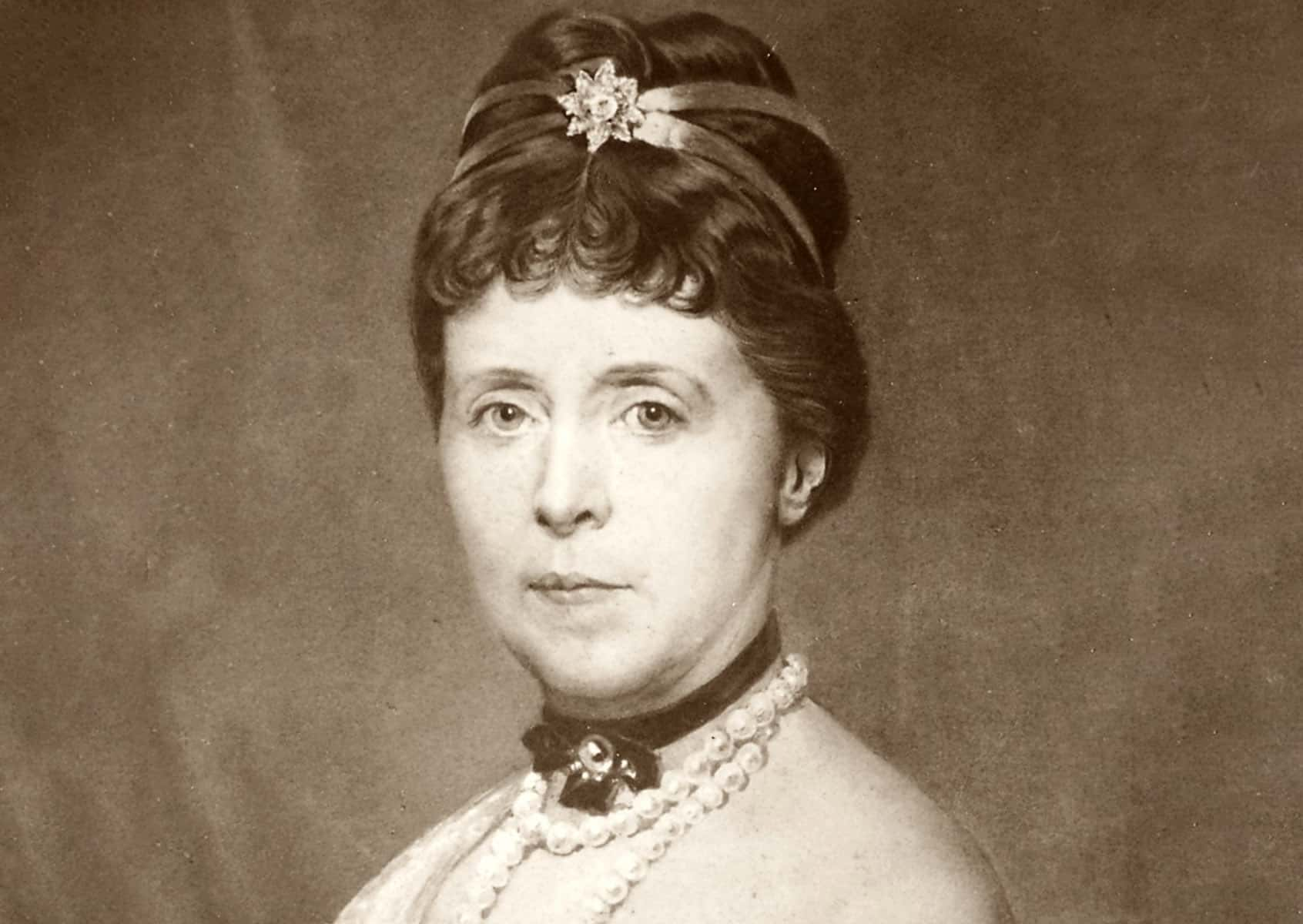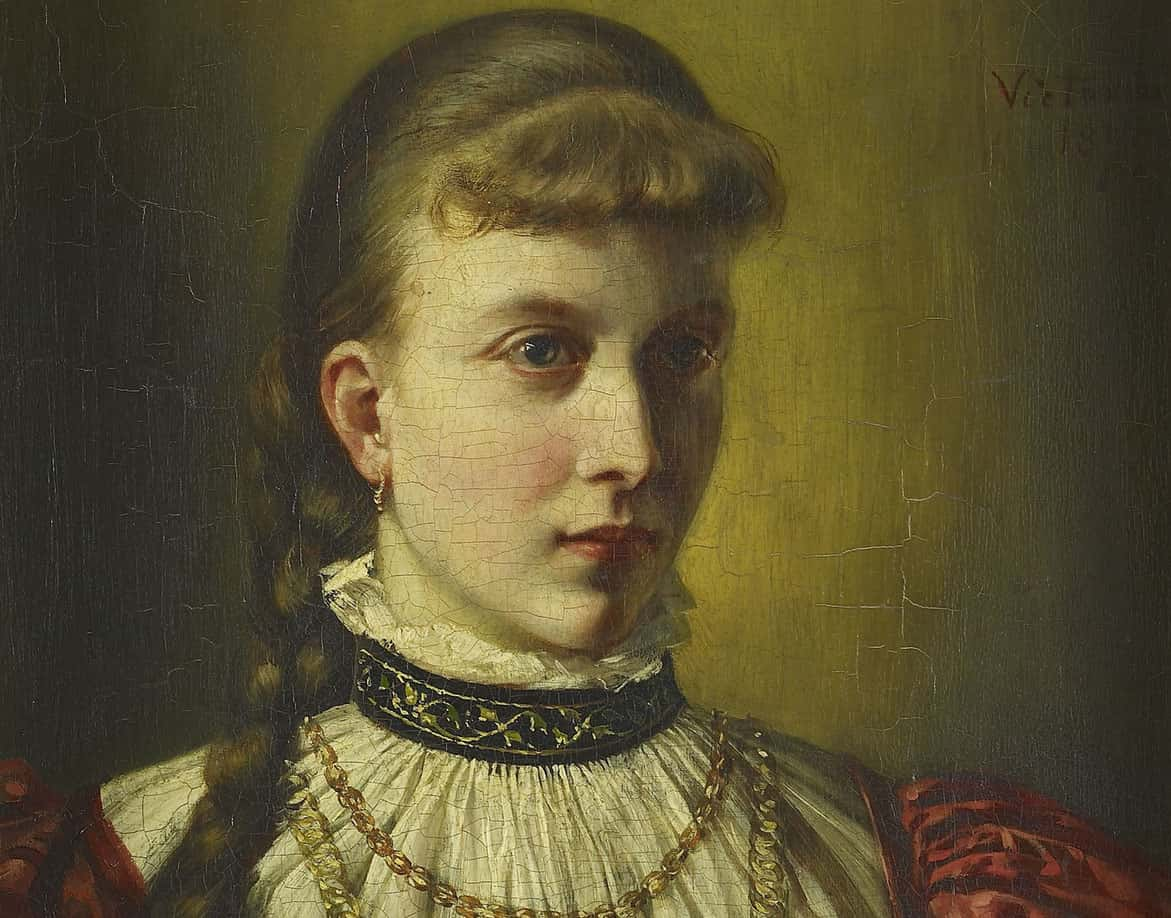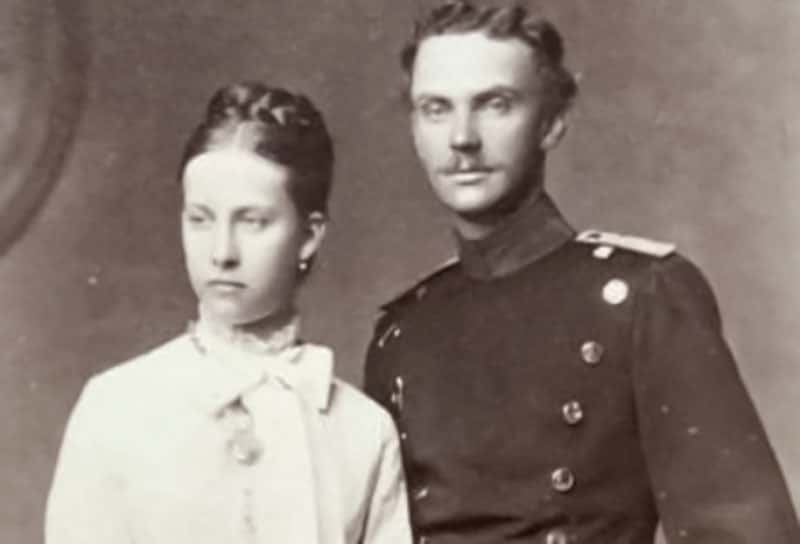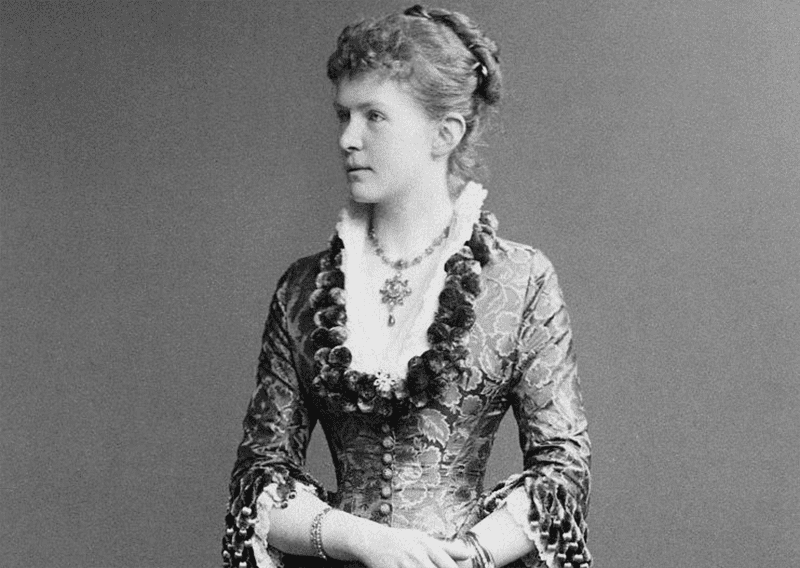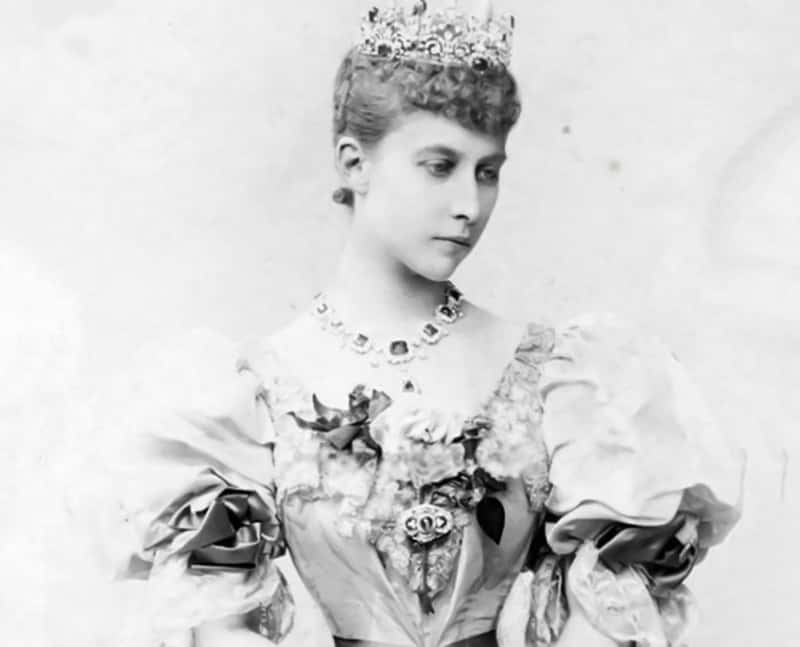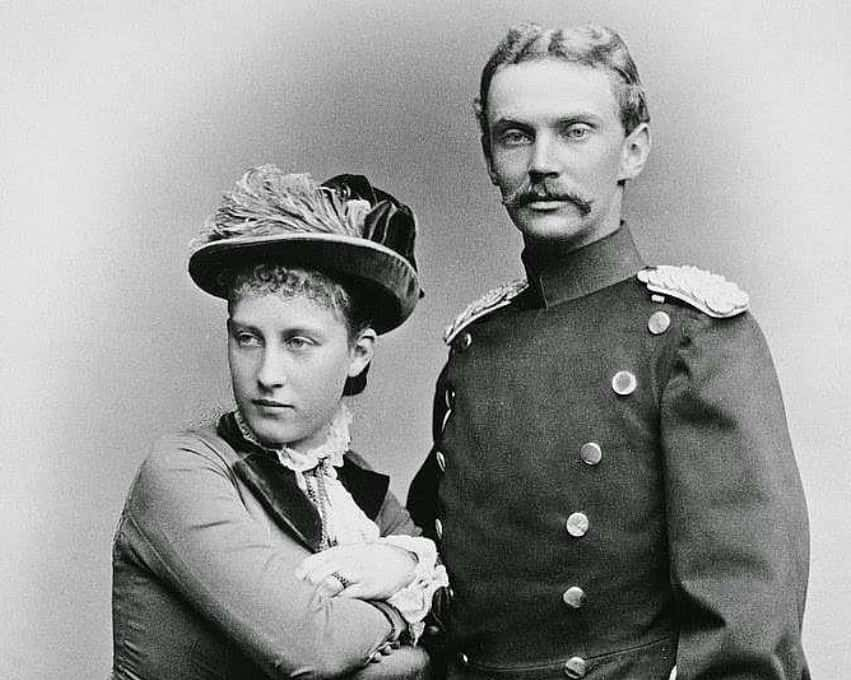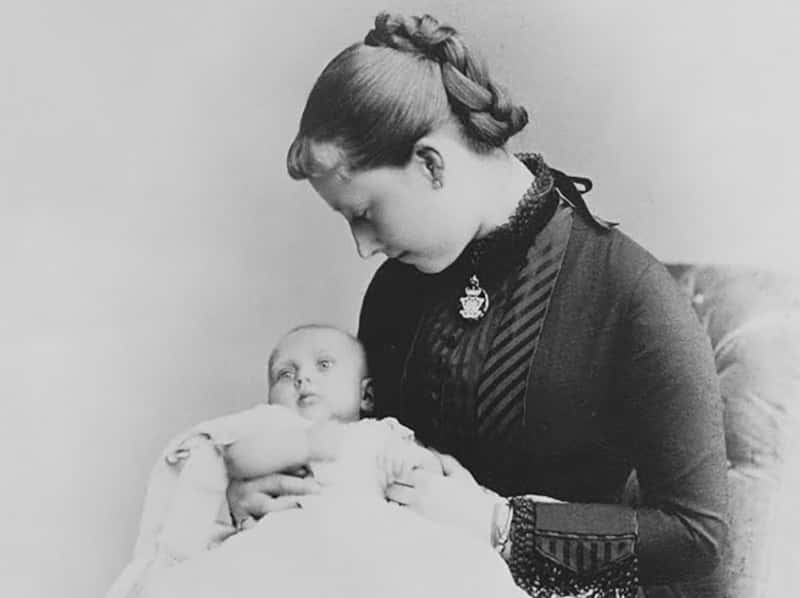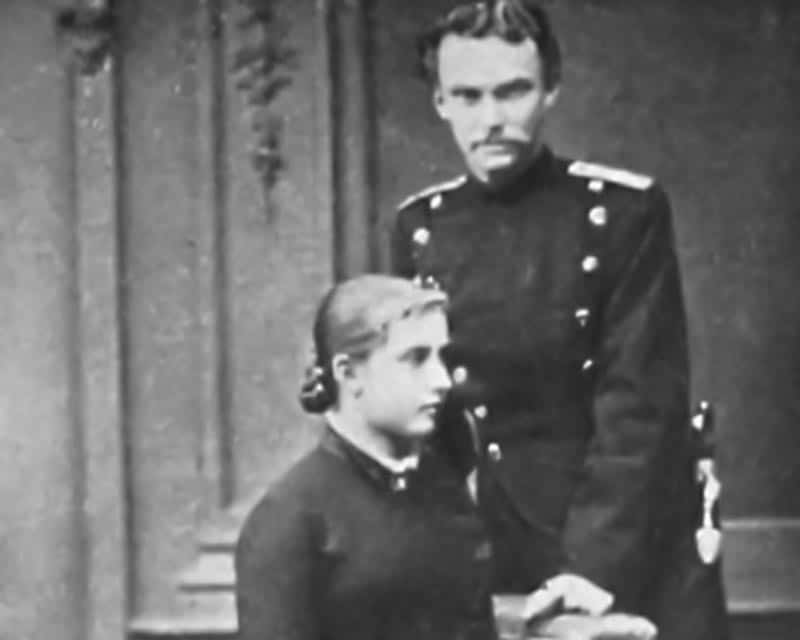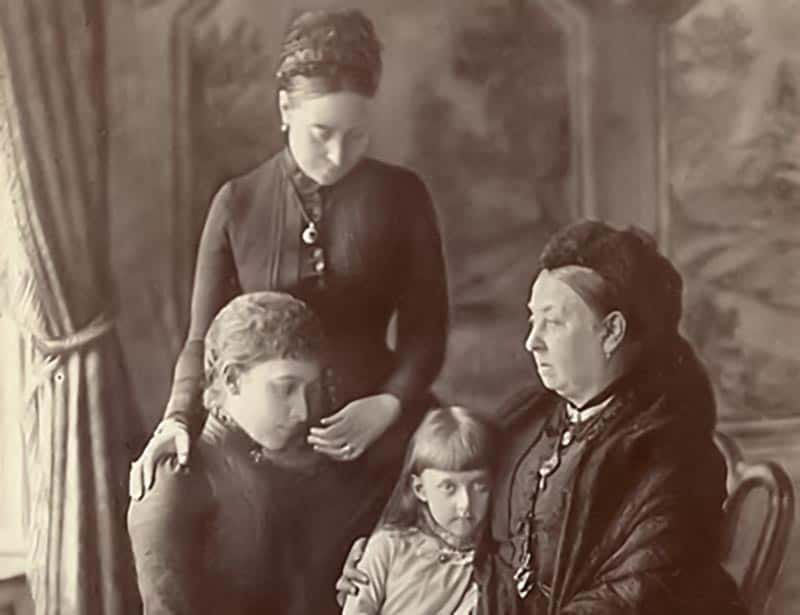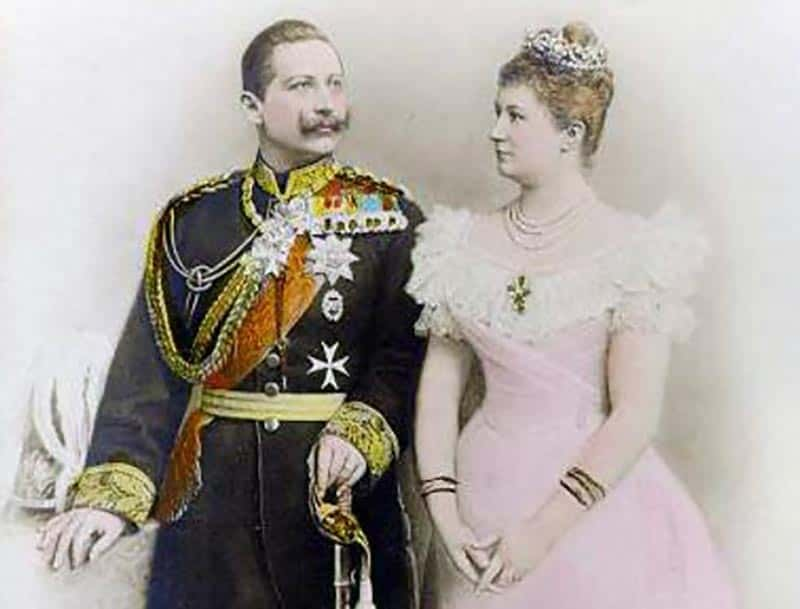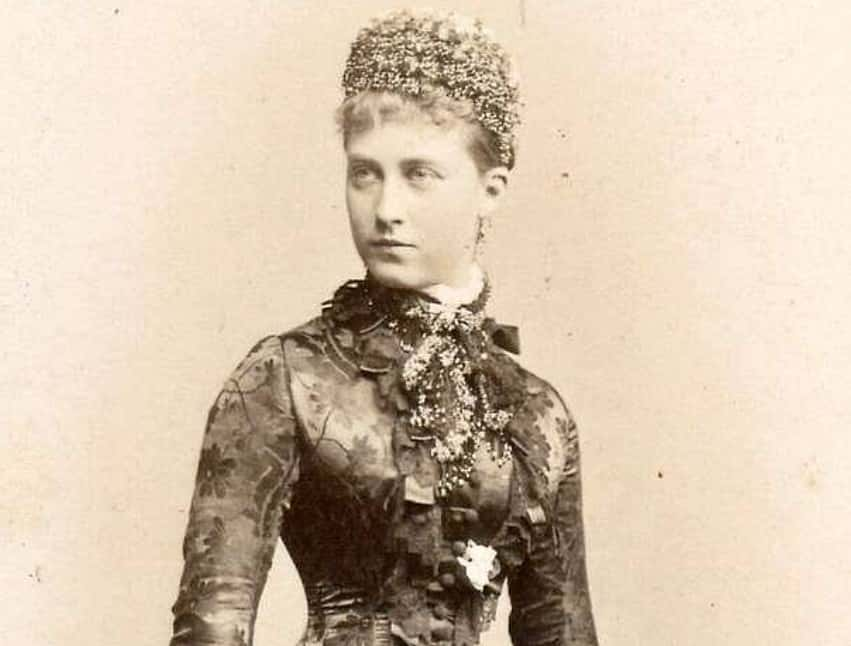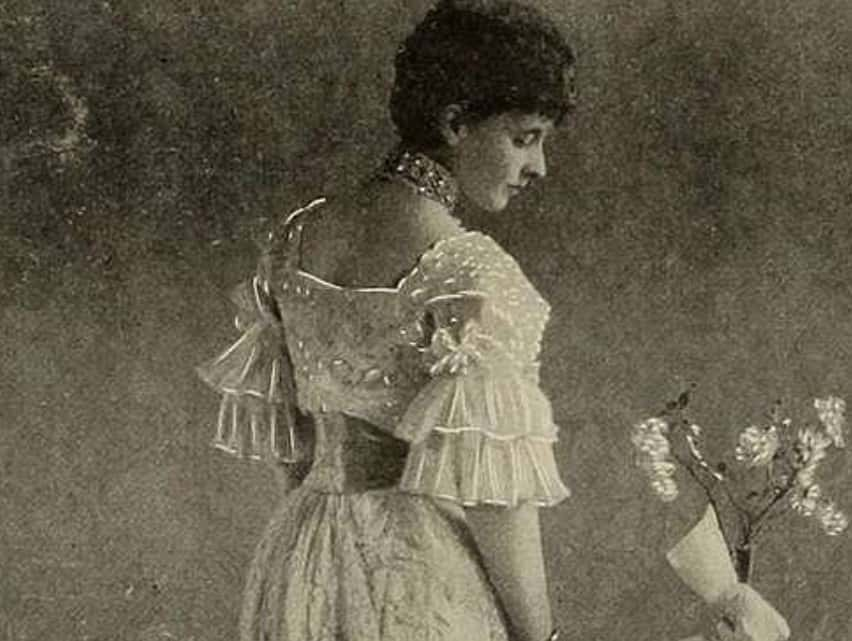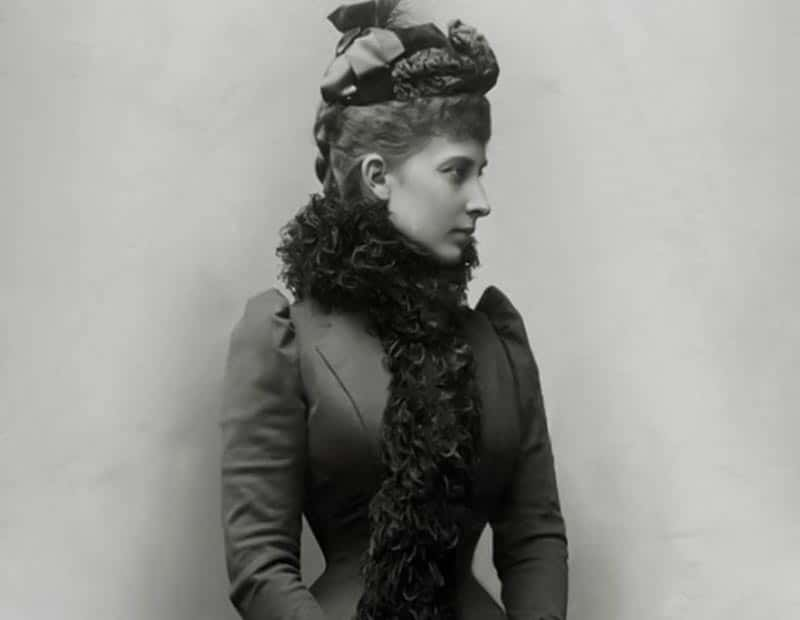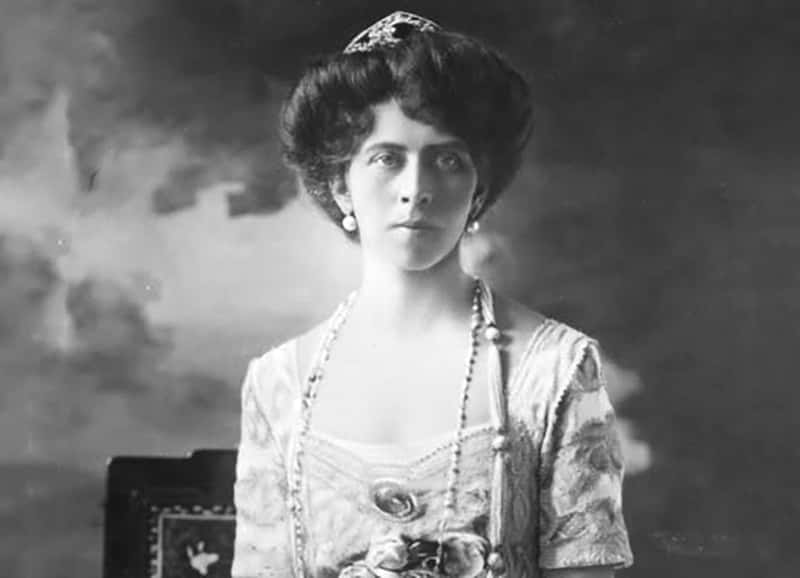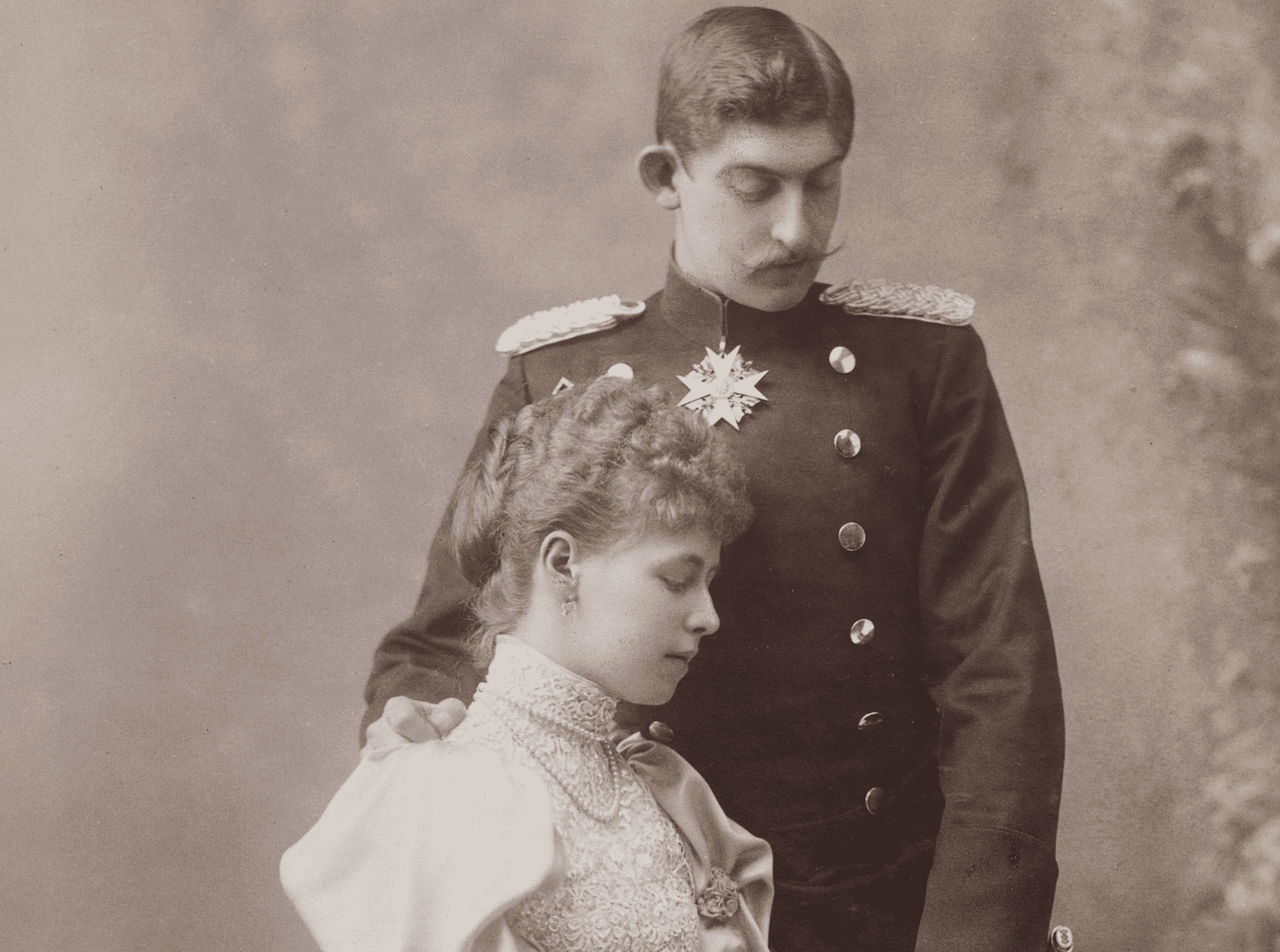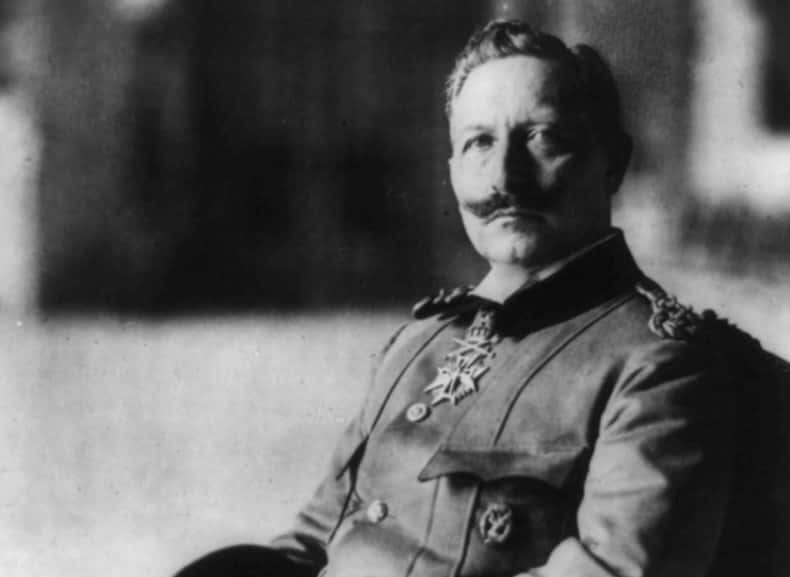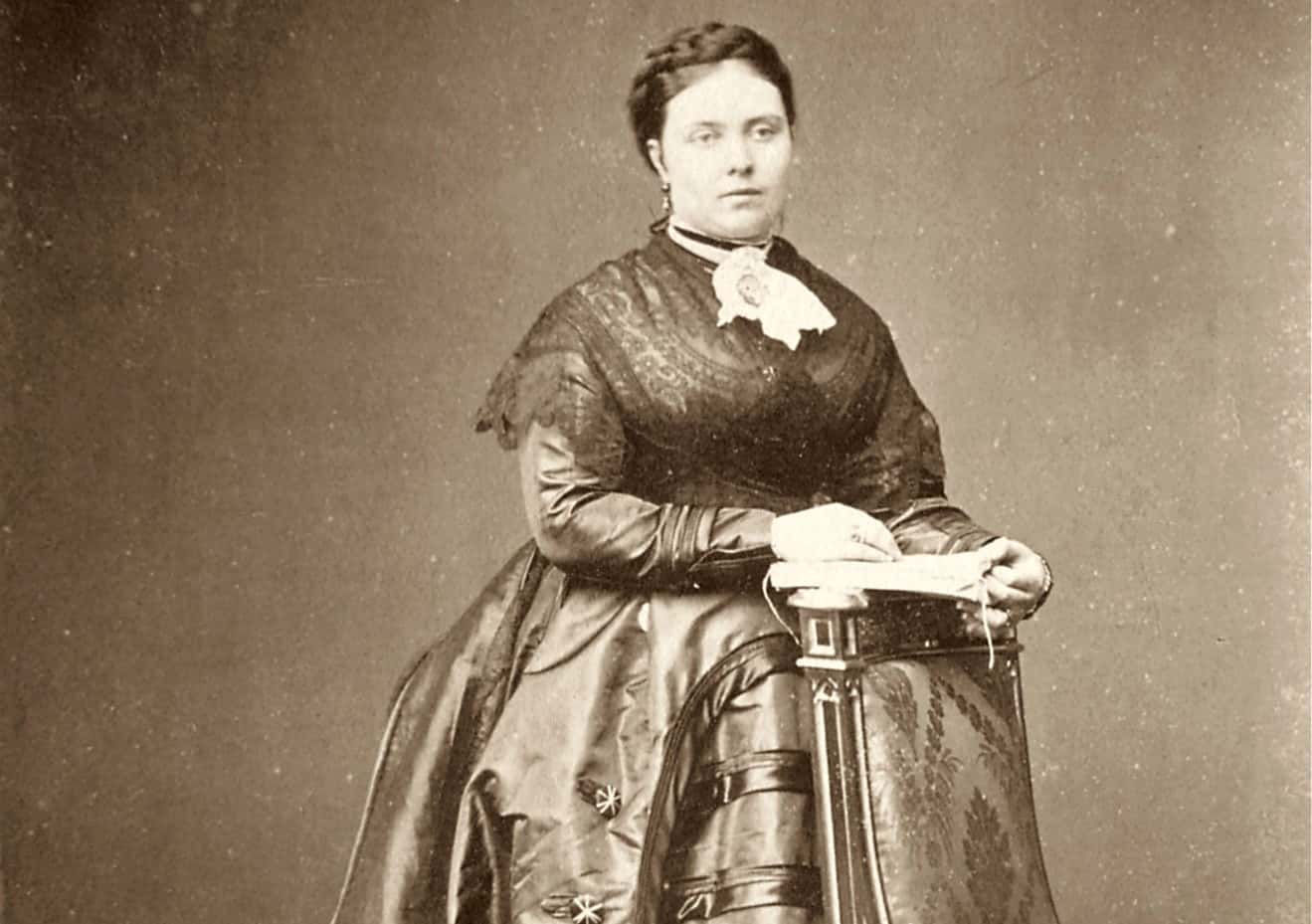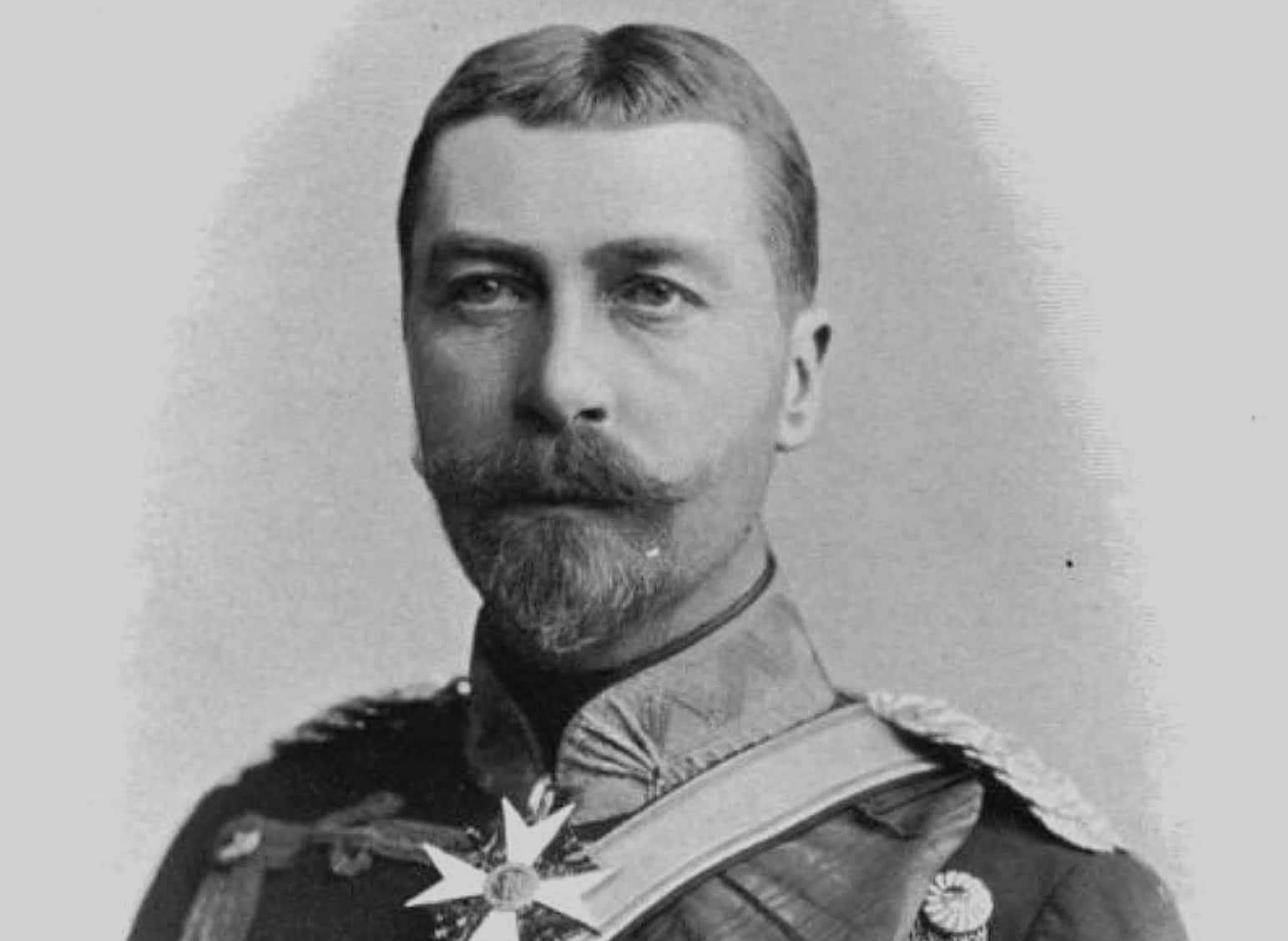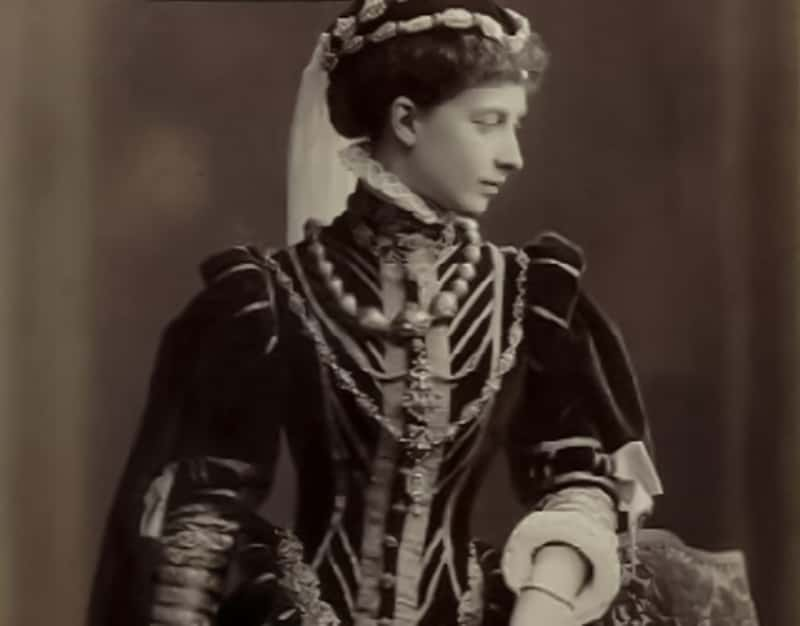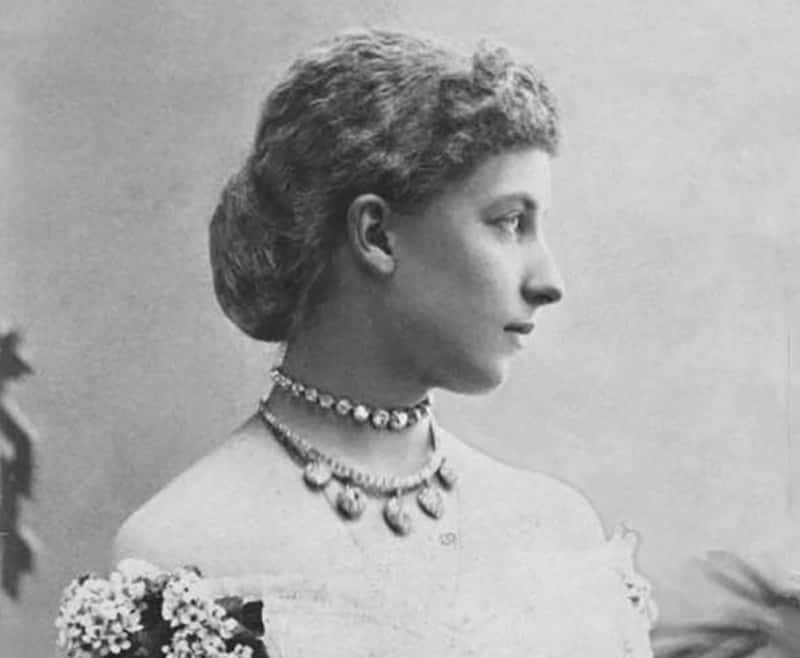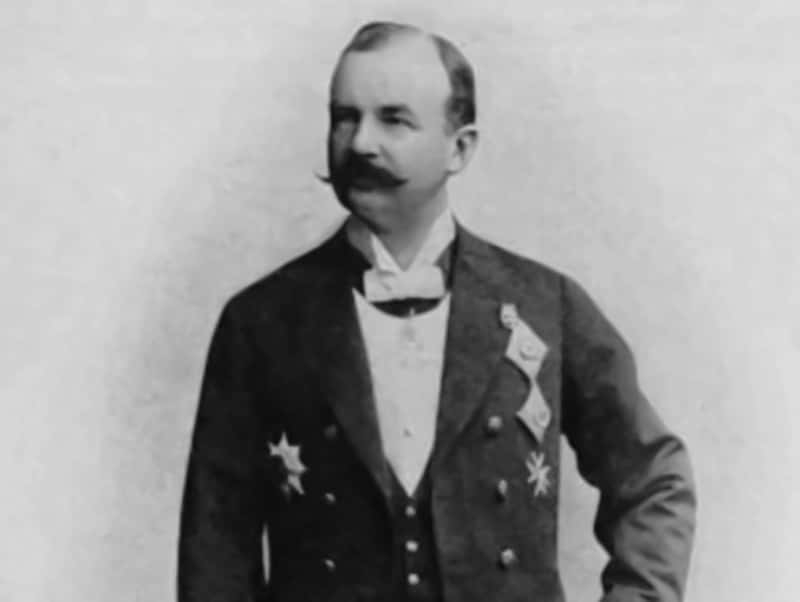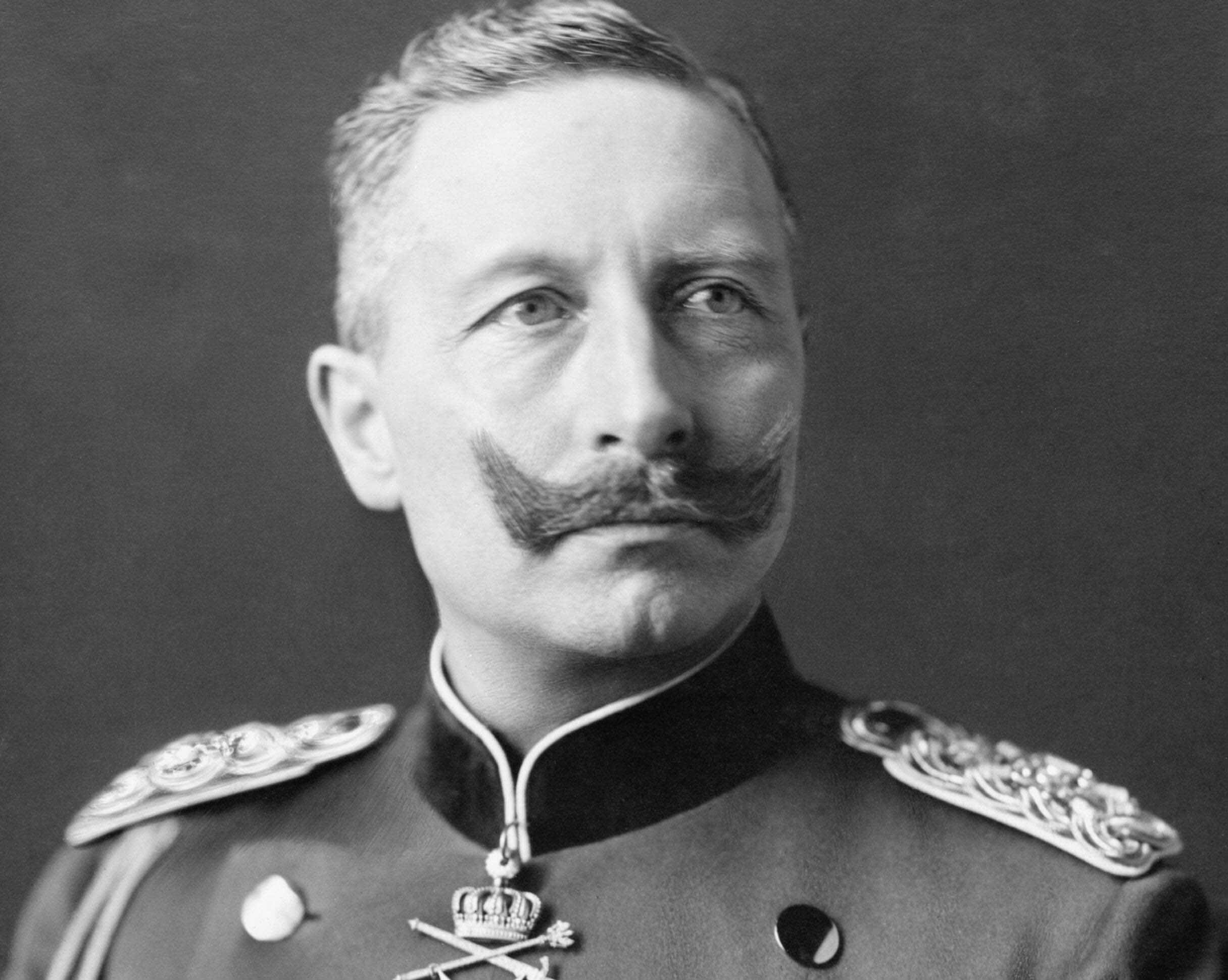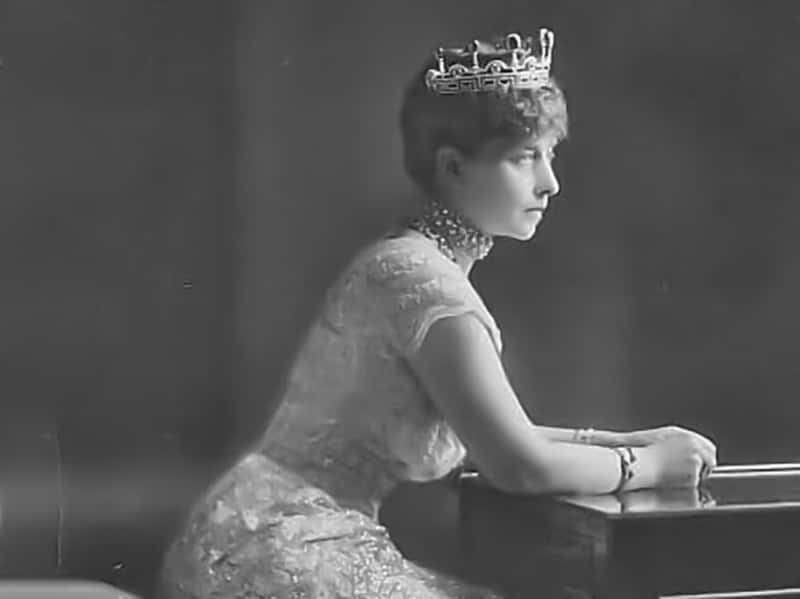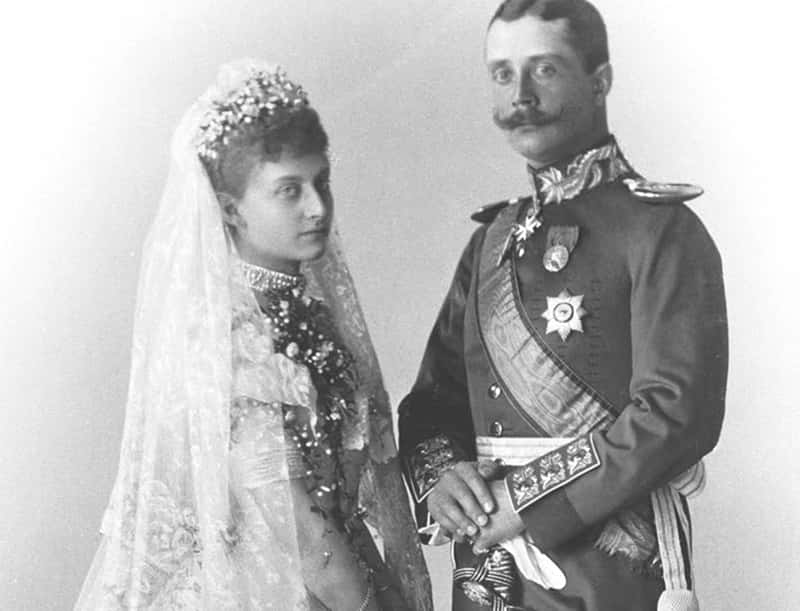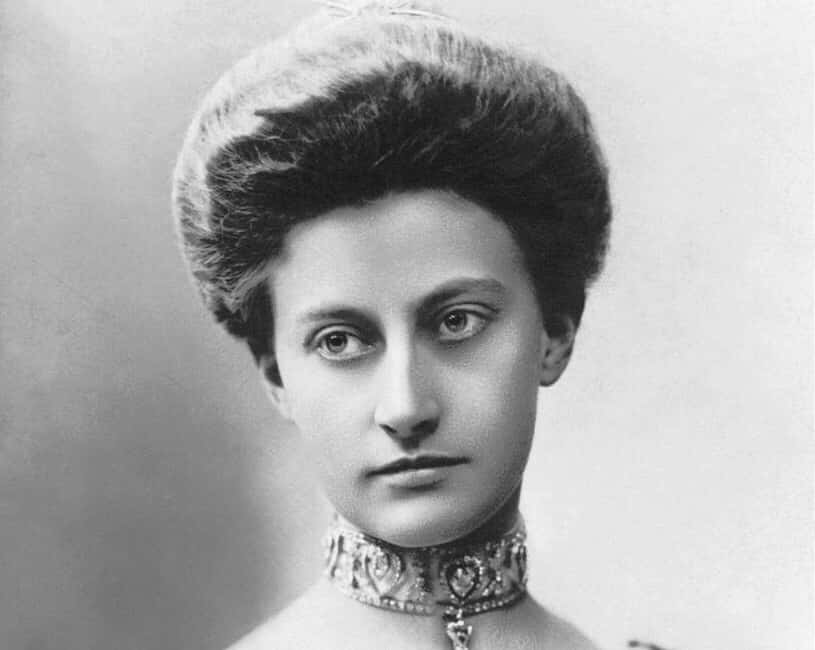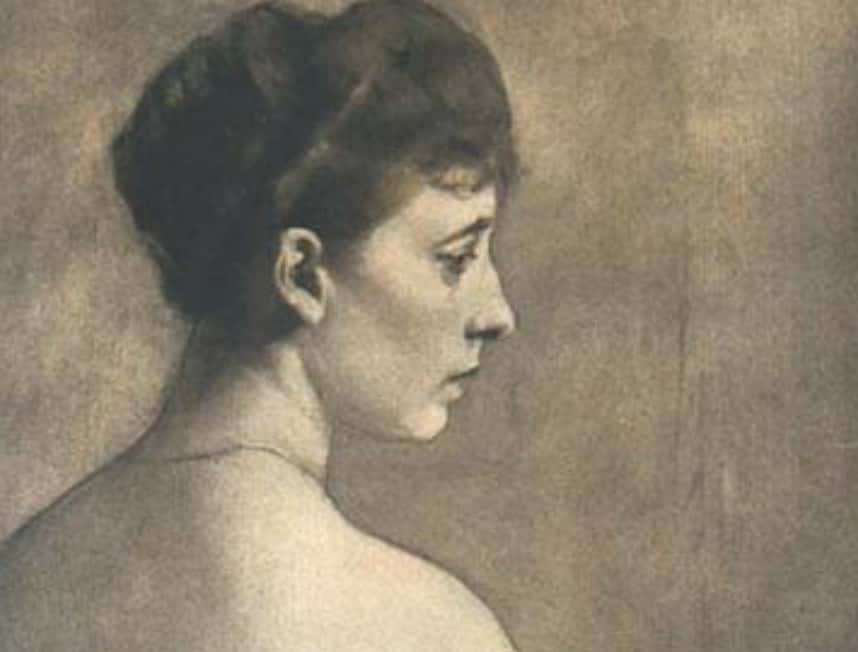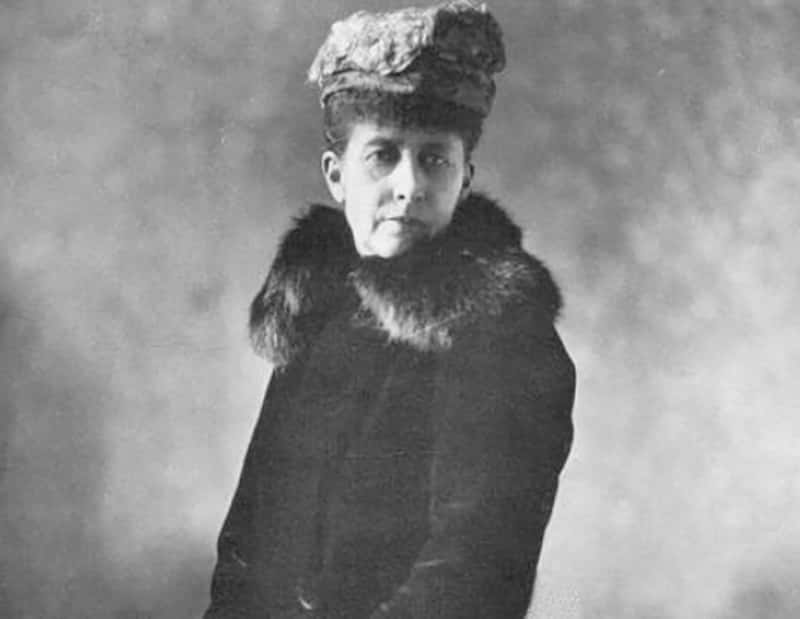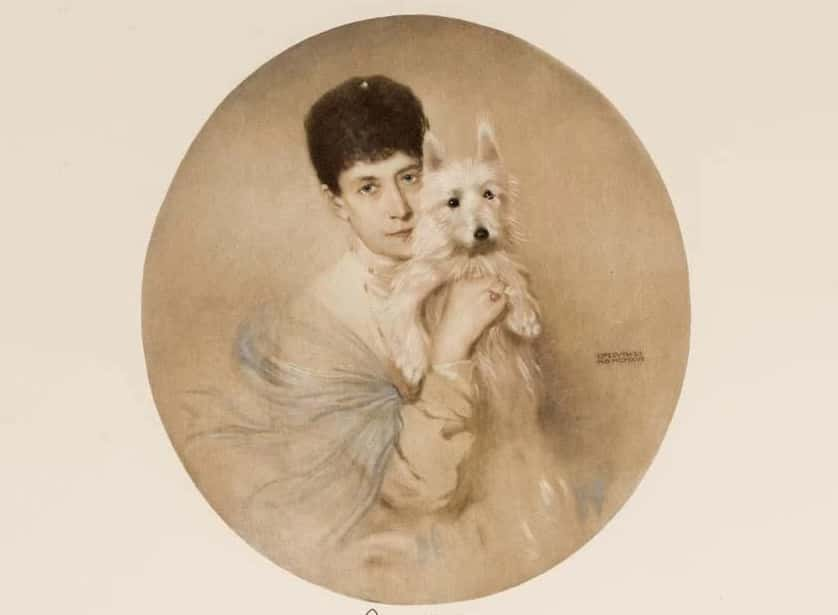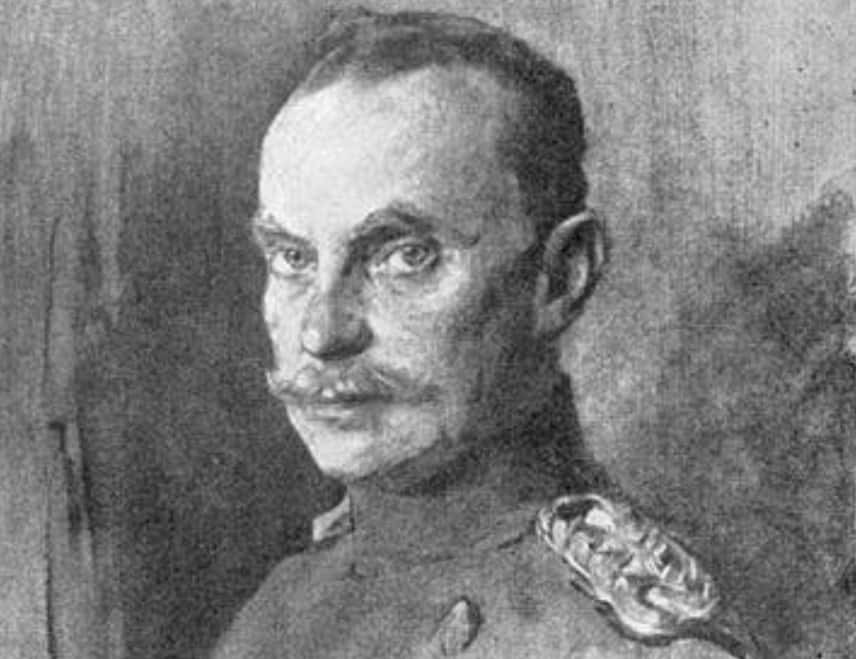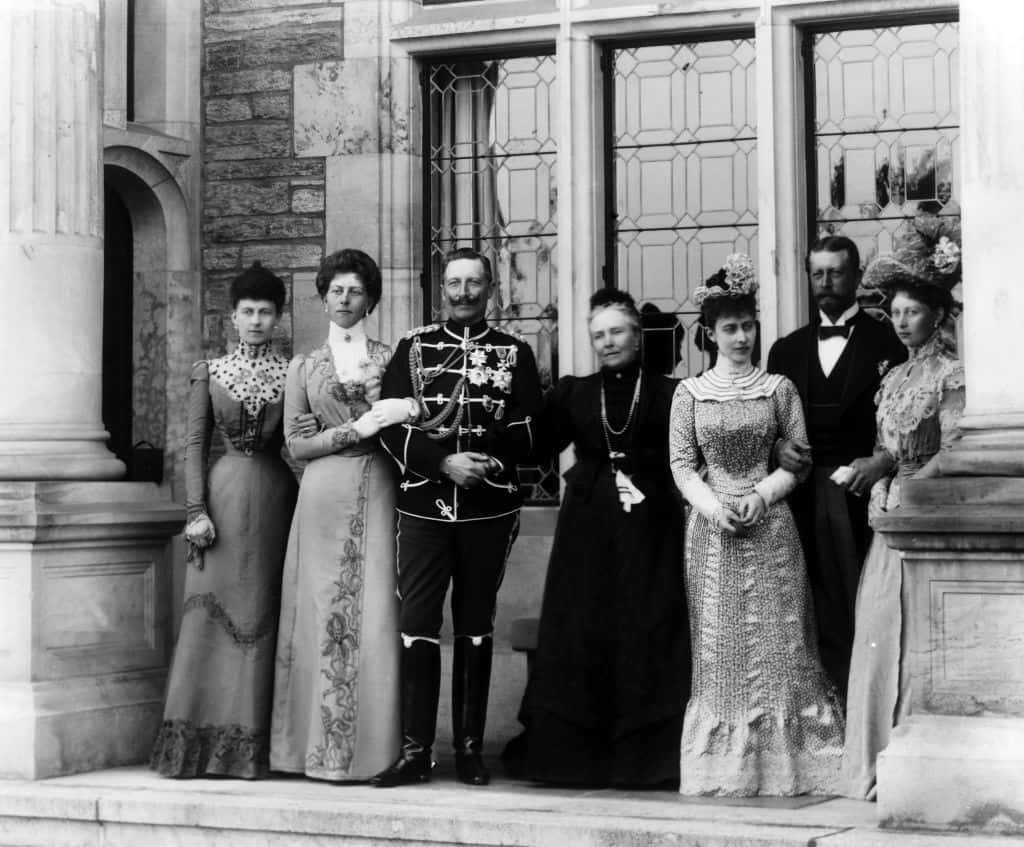Queen Victoria’s eldest granddaughter, Princess Charlotte of Prussia, had it all, including a vicious mystery disease that made her life miserable. Even so, she presented herself as a charming, honey-voiced hostess—a busy social bee with a nasty sting. Perhaps if she’d been born to better health she would not have been famous for being a resentful daughter, a neglectful mother, and a two-faced gossip whose wicked rumors rocked high society. Let’s spill the tea on how she quickly earned her reputation as Berlin’s original Mean Girl.
Princess Charlotte Facts
1. She Had an Auspicious Beginning
Born on July 24th, 1860, to parents Prince Frederick William of Prussia and Victoria, Princess Royal, Charlotte’s arrival into the world was a cause for celebration. Her mother, known as Vicky to the family, had suffered a traumatic labor with Charlotte’s older brother Wilhelm 19 months prior. The easy birth of a healthy baby girl was surely a sign of better days to come.
Unfortunately, fate had other plans.
2. There Was a Baby Name Tug-Of-War
Queen Victoria wanted her first granddaughter to be named after her, but the Prussian side of the family insisted she be named after Empress Alexandra Feodorovna, born a Charlotte. Vicky and her in-laws had been routinely sticking it to each other for years, but to keep the peace, she named the new princess Viktoria Elisabeth Auguste Charlotte, thereafter to be known as Princess Charlotte or Charly.
3. She Was an Anxious Little Girl
Charlotte was a princess, but she was no angel. The young royal was prone to fits of agitation and nervous traits such as biting her nails and constantly pulling on her clothes. She was forced to wear gloves and had her pockets sewn shut to stop her from fidgeting. When that didn’t work, her parents resorted to drastic measures: They made her stand in the corner with her hands tied together.
None of these corrective measures did any good. In fact, things only got worse.
4. Her Bad Reputation Started Very Early
Much to the embarrassment of her poised and proper mother, little Charlotte began having outbursts of rage and wild tantrums. Queen Victoria was not amused. Princess Charlotte’s behavior appalled her, and she warned, “Grandmama does not like naughty little girls.” Little did she know, there might have been a sinister cause to Charlotte’s fits.
5. She Had An Undiagnosed Disease
In the 1990s, DNA tests performed on Princess Charlotte’s remains found evidence of porphyria, a genetic disease with a long list of nasty symptoms. Not only would this account for Charlotte’s hyperactivity, but during her life, she also complained of excruciating pain, digestive troubles, bouts of lameness, blisters on her skin, and dark red urine. But sure, as a little girl, she should’ve smiled more…
6. She Came From A Long Line Of Sufferers
Ahh, that small gene pool! Porphyria is suspected to have plagued many members of the royal family, including Margaret Tudor and Mary, Queen of Scots. Most famously, King George III suffered a series of symptomatic attacks. These not only included intense physical pain, but bouts of rambling obscenities and hallucinations that earned him the moniker of “The Mad King.”
Princess Charlotte evidently didn’t have it as bad as her ancestor—but erratic behavior would trouble her for her entire life.
7. Her Mom Wanted Her To Be A Country Girl
With Princess Charlotte’s father being a loving but absent husband, her mother took the lead in raising the kids. Besides their homes in Potsdam and Berlin, Vicky purchased a farm so that her brood could enjoy the pleasures of country life, determined to foster a love of British culture by replicating as best she could her own English upbringing. But Charlotte wasn’t going to make it easy…
8. She Was A Bad Student
Princess Charlotte was…not the brightest bulb. An indifferent student, her mother once sniped: “Stupidity isn’t a sin but it renders education a…difficult task.” Vicky demanded top marks and made her disappointment evident with harsh criticism she hoped might at least prevent vanity. All Charlotte learned was resentment, and it would only deepen over time.
9. Family Tragedy Divided The Family
The childhood deaths of brothers Sigismund and Waldemar from meningitis and diphtheria caused a rift between siblings that would never heal—and it was all their mother’s fault. Imagine Charlotte and her brothers Wilhelm and Henry witnessing their grief-stricken mother ditch her strict parenting ways to devote herself to indulging sisters Viktoria, Sophie, and Margaret. Let a lifetime of envious stink-eyes commence!

